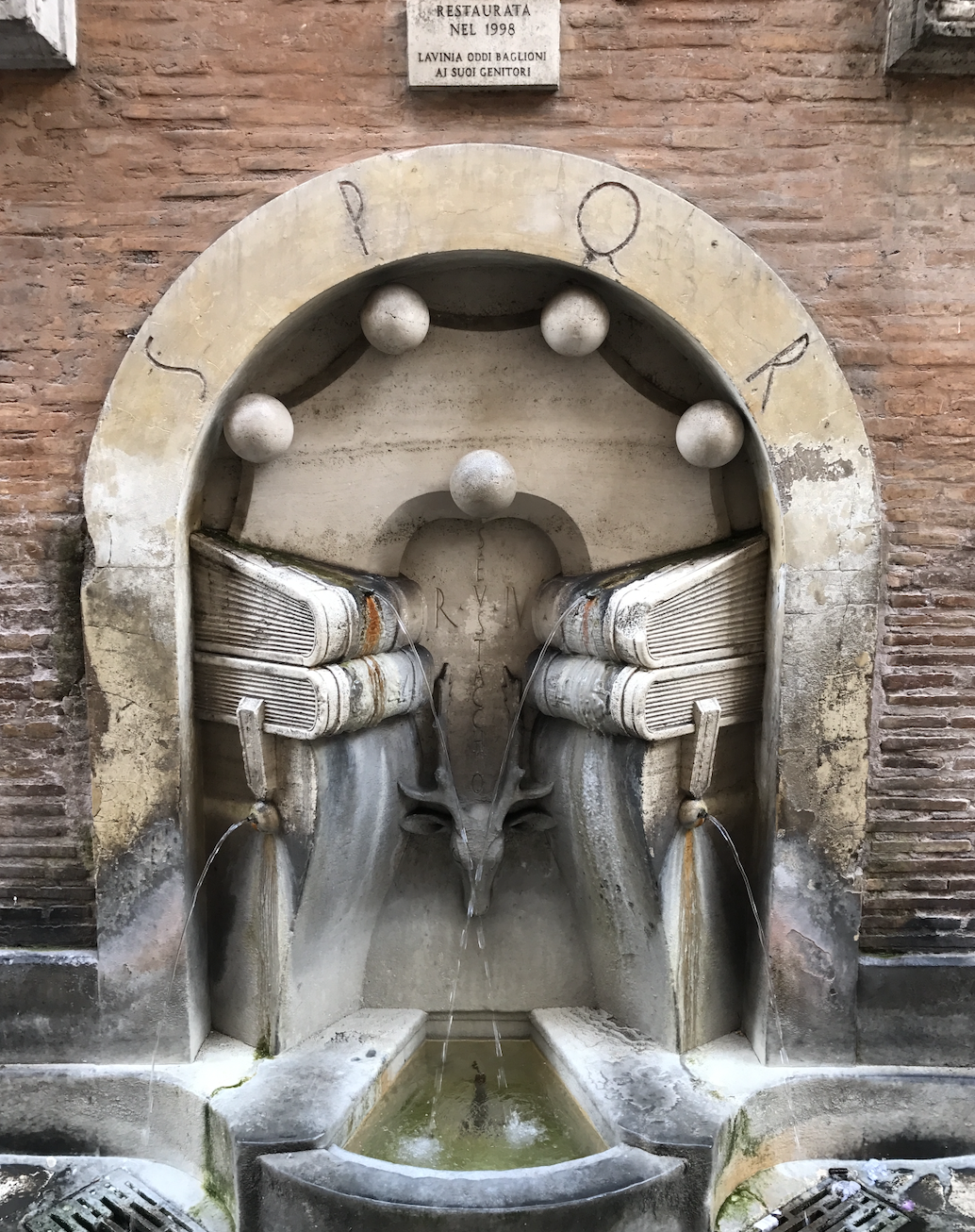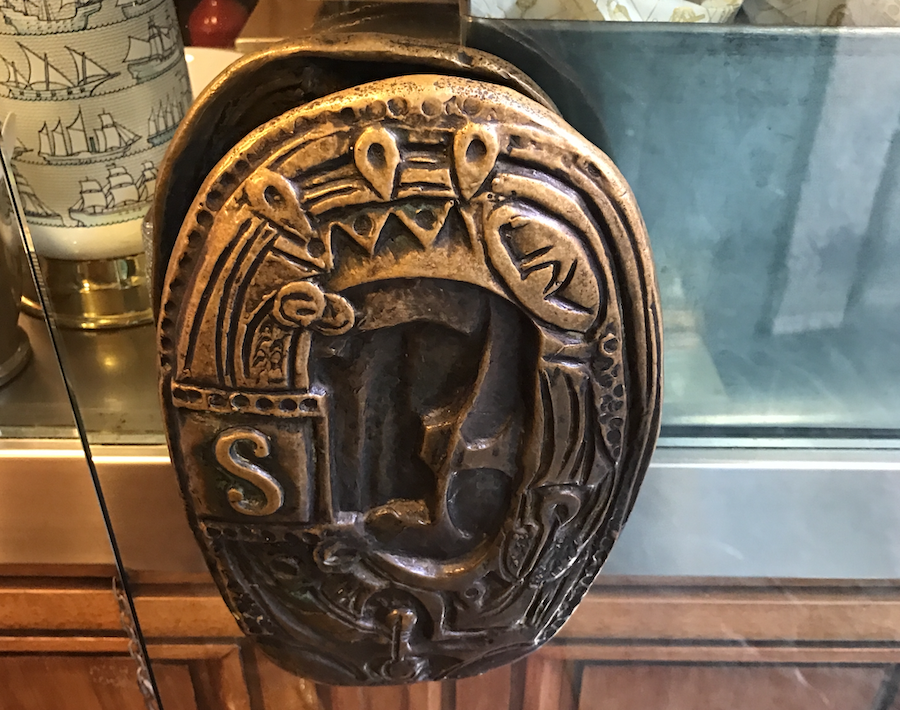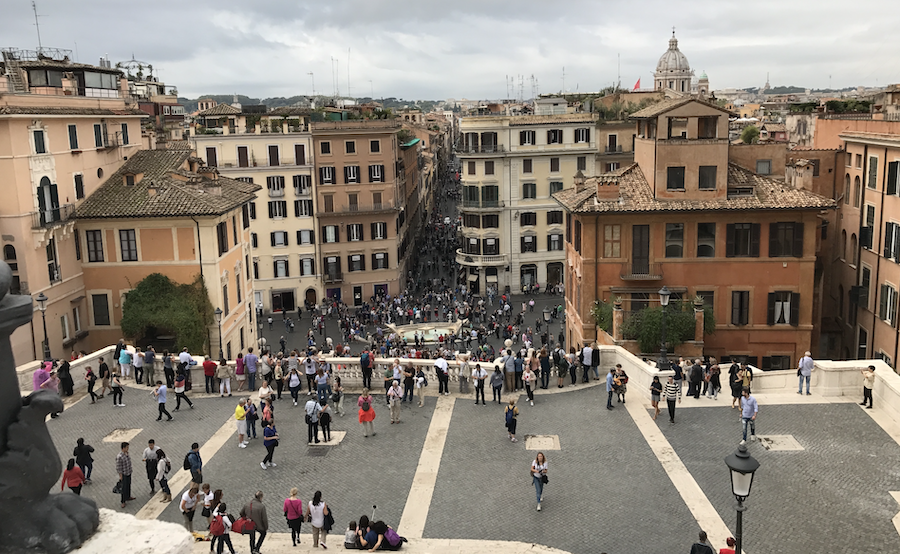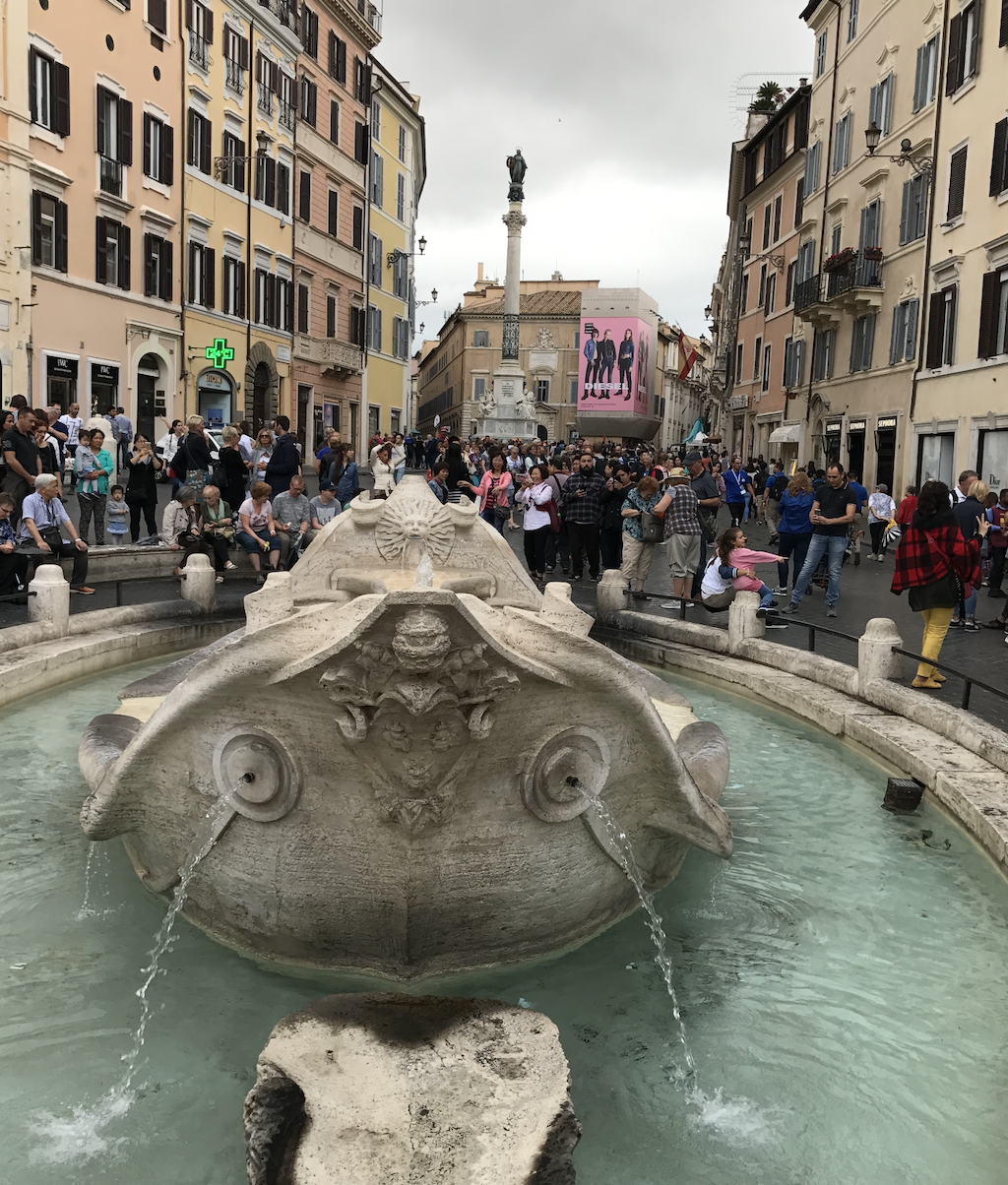My fascination with Rome
I have always loved Rome and I have visited the city many times. As a feng shui expert, I am drawn to its magnificent architecture, its layered history and the powerful energy that flows through its streets. The interplay of ancient ruins, Renaissance palaces (I myself was born in a Renaissance town, called Zamosc, Poland) and lively piazzas resonates with feng shui principles and fascinates me every time I return.
Feng shui, meaning wind–water, is a Chinese practice concerned with harmonising the built environment with natural energy flows. When applied to a city, feng shui evaluates landforms, waterways, orientation, building height, street layout and the social life of inhabitants. In this blog I emphasise a long list of factors: the pattern of a city’s map and its overall shape, the availability of high viewpoints and power places, the strength and quality of qi or vital energy, the balance of yin (calm, receptive) and yang (active, expressive) zones, and the presence of the five elements (water, wood, fire, earth and metal). I also note the importance of water and air quality, the biophilic effect of trees and parks, and the role of people, values, branding and smells. A good feng shui city has a coherent yet legible layout, avoids chaotic traffic and provides attractive squares, markets, bookshops, art galleries and night‑time entertainment. Sustainable design, ecological travel and long‑term urban planning reinforce the health of a city and its people.
In this blog I apply those criteria to Rome, Italy. I analyse the city’s landform, water features, green spaces, architecture and social life through the lens of the five elements and the balance of yin and yang. I conclude with an overview of the best high point viewpoints over the city and a discussion of which areas locals describe as the heart of Rome.
Landform, water and the armchair configuration
Seven hills and river setting
Rome was founded on the banks of the Tiber River in central western Italy. The settlement began on a cluster of hills – Aventine, Caelian, Capitoline, Esquiline, Palatine, Quirinal and Viminal – which overlooked the river. The elevated ground protected inhabitants from floods and invasions and provided commanding views of the surrounding landscape. As the community grew, the marshy valleys between the hills were drained and converted into public fora and marketplaces, integrating the hills into a single urban organism. In classical feng shui this arrangement resembles the ideal “armchair” configuration: the hills act as the supportive back of the chair, the river provides open space at the front and smaller ridges on either side protect the flanks. Such a landscape brings yin support and yang movement, allowing residents to feel sheltered yet connected.
Tiber River and water qi
The Tiber flows through Rome from north to south, linking the historic centre, Vatican, Castel Sant’Angelo and Trastevere. Bridges old and new cross the river at regular intervals, creating a rhythm of connection. The river feeds an island shaped like a ship – the Tiber Island – which long ago housed a temple to the healing god Aesculapius and still hosts a hospital. During antiquity the city built a network of aqueducts that supplied public fountains and baths; today Rome has more than two thousand fountains, including monumental works such as the Trevi Fountain and countless neighbourhood fountains. These water features support the water element by maintaining humidity, tempering the Mediterranean heat and providing audible tranquillity. Modern initiatives have opened the riverbanks to cyclists and pedestrians, allowing qi to flow at a human scale below street level. Artificial lakes and ponds in districts like EUR and parks like Villa Borghese add further water qi to the urban fabric.
Roman understanding of energy flow, architecture and power places
Roman architects and planners were acutely aware of how natural forces shaped the health and vitality of a city. Drawing on observations of wind, sunlight and water, figures such as Vitruvius emphasised that new towns should be established on high ground, away from marshes, in temperate climates and oriented to avoid prevailing winds. Streets were aligned relative to the dominant winds to prevent the formation of wind tunnels, and public buildings were sited to take advantage of solar exposure: basilicas were placed on the sun‑scorched side of the forum to warm winter gatherings, and bath complexes were oriented toward the south or south‑west to capture afternoon sunlight. Vitruvius also advised testing water sources and observing the health of animals and plants before deciding where to build. These concerns mirror feng shui principles of harnessing environmental qi: selecting supportive topography, orienting buildings to balance yin qualities like cool breezes and shade with yang qualities such as sunlight and warmth, and situating civic spaces at auspicious points. The Palatine Hill, where Rome’s founders are said to have sought omens, became a seat of imperial power and remains a symbolic heart of the ancient city. Such attention to energy flow and auspicious placement demonstrates that Roman notions of good architecture and urbanism resonate with the timeless aim of feng shui: to create harmonious environments that support human flourishing.
The five elements in Rome
Water
Beyond the Tiber, Rome’s water element expresses itself through numerous fountains, basins and pools. Ancient aqueducts once supplied public baths and drinking fountains; today the fountains still provide potable water and are cherished as decorative landmarks. The Trevi Fountain, built in the eighteenth century, symbolises abundance and draws visitors who toss coins over their shoulders to ensure a return to Rome. Other notable water features include the lakes of Villa Borghese and the paddling lake in the EUR district. These bodies of water moderate the climate, attract wildlife and offer recreation.
Wood
Rome is one of Europe’s greenest capitals. The city’s park system grew from aristocratic estates and Papal villas, leaving it with extensive green spaces. Villa Borghese, located just north of the historic centre, covers approximately eighty hectares and contains formal gardens, ancient trees, ponds and cultural institutions such as the Galleria Borghese and a zoo. Villa Doria Pamphili, the largest historic park in Rome, spreads across 184 hectares on the Janiculum Hill and offers woodlands, meadows and an elegant seventeenth‑century villa. Villa Ada Savoia in the north of the city is another vast park with lakes and dense forest. In addition to these grand estates, Rome has botanical gardens, neighbourhood parks, tree‑lined boulevards and pocket gardens. Recent sustainability initiatives promote micro‑forests, green roofs, vegetated walls and permeable pavements to reduce heat islands and enhance biodiversity. Trees and plants not only provide shade and oxygen but also evoke the wood element’s qualities of growth, health and creativity.
Fire
Sunlight, warmth and social life constitute Rome’s fire element. The Mediterranean climate ensures long hours of sunshine, and the city’s piazzas – Piazza Navona, Piazza del Popolo, the Spanish Steps and Campo de’ Fiori – are bathed in light throughout the year. At night, street lighting, restaurants and cafés continue the fire element, creating lively atmospheres. Festivals and religious processions, open‑air concerts, theatrical performances and sports events add further yang energy. The district of Trastevere and the riverside promenades are known for their vibrant nightlife, with bars, trattorie and music venues staying open until late.
Earth
Rome’s built heritage embodies the earth element. The city is an open‑air museum of travertine, tufa and marble: the Colosseum, the Pantheon, the Roman Forum, the Palatine palaces and countless churches and basilicas testify to millennia of construction. Cobbled streets and piazzas ground the flow of people, while terracotta roofs and warm‑coloured façades provide a sense of stability and continuity. The Roman tradition of convivial markets and home‑cooked cuisine reflects the nurturing aspect of earth. Even modern interventions in the ancient fabric tend to respect the earth element through the use of stone and brick.
Metal
Although Rome is associated with antiquity, it also exhibits the metal element through modern architecture, infrastructure and cultural refinement. Buildings such as the Fuksas‑designed convention centre known as La Nuvola (the Cloud) and the rationalist structures of the EUR district have sleek lines and reflective materials. Contemporary bridges like Ponte della Musica span the Tiber with elegant steel arcs. Museums, art galleries and libraries – such as the National Gallery of Modern Art and Galleria Nazionale d’Arte Antica – offer spaces for contemplation and intellectual clarity. The city’s organised transport system, including metro lines, trams and cycle paths, channels movement and information like metal.
Yin and yang balance
feng shui seeks harmony between yin (receptive, quiet) and yang (active, stimulating) energies. Rome achieves this through contrasts between tranquil parks and bustling squares, shaded cloisters and noisy markets, contemplative churches and lively nightlife.
Yin spaces include the gardens of Villa Borghese, Villa Doria Pamphili and Villa Ada; the shaded banks of the Tiber; secluded courtyards of monasteries and palazzi; and narrow alleys that retain a village character. These places allow rest, reflection and cooling.
Yang spaces comprise the energetic piazzas, busy commercial streets such as Via del Corso, crowded markets like Campo de’ Fiori and Porta Portese, nightlife hubs in Trastevere and Testaccio, and sports venues. Festivals, open‑air concerts and football matches amplify the yang energy. By offering both types of environment, Rome enables its residents and visitors to alternate between activity and repose.
Qi flow, orientation and urban layout
Rome’s street pattern evolved over centuries rather than following a rigid grid. Major arteries such as Via del Corso, Via dei Fori Imperiali and Via Nazionale channel movement north to south and east to west, connecting the historic centre to outlying districts. The narrow lanes of the medieval core twist and turn, creating a sense of discovery and mystery. Piazzas act as qi reservoirs, where people gather, exchange news and enjoy art and fountains. Modern interventions like the lungotevere, a series of boulevards along the river, provide linear qi flow for vehicles, cyclists and pedestrians. The orientation of important buildings also reflects cosmological principles: St Peter’s Basilica is aligned with the winter solstice sunrise; the Pantheon’s oculus invites a shaft of light at midday; the Colosseum stands on an east to west axis. These alignments contribute to the city’s unique energy field.
Social and cultural dimensions
A city’s feng shui is not only about landforms and buildings but also about its people, values and cultural life. Rome is a living metropolis with a population of almost three million. It hosts millions of visitors each year, yet retains distinct neighbourhood identities. Local markets such as Campo de’ Fiori and Porta Portese connect residents with fresh produce, antiques and community. Bookshops, cafés, galleries and museums nourish the intellect. The city’s countless churches and basilicas provide spiritual refuge, while synagogues and mosques reflect religious diversity. Food culture is central to Roman life: dishes like carbonara, cacio e pepe and amatriciana are celebrated, and trattorie and osterie provide places for convivial gatherings. Hospitality and the ritual of the passeggiata (evening stroll) demonstrate social harmony.
High point viewpoints over Rome
Certain elevated places allow residents and visitors to gain an overview of Rome and absorb the city’s qi. These viewpoints act as “dragon lairs” in feng shui terms, offering both perspective and inspiration.
Pincio Terrace
Located within Villa Borghese, the Pincio Terrace overlooks Piazza del Popolo and provides sweeping views of the historic centre. From this terrace one can see St Peter’s Dome, Castel Sant’Angelo and the Monument to Vittorio Emanuele II. The view is particularly spectacular at sunset, when the city’s warm colours glow.
Janiculum Hill
Janiculum (Gianicolo) lies on the right bank of the Tiber. Although outside the ancient city walls, it offers one of the best panoramas of Rome. Romans often stroll here for leisure; the hill hosts the equestrian monument of Giuseppe Garibaldi and a cannon that fires at noon. From its terraces visitors can see the city’s skyline and monuments unfolding like a tapestry.
Vittoriano terraces
The Monument to Victor Emmanuel II, also known as the Altar of the Fatherland, has panoramic terraces accessible by lift. These terraces offer 360 degree views across Rome, taking in the Colosseum, the Imperial Fora, the Tiber, the Jewish Ghetto, the Capitoline Hill, the Quirinal Palace, the modern EUR district and the distant Castelli Romani hills. The white marble building itself symbolises Italy’s unification and stands at a powerful energy point.
Quirinale Terrace and Scuderie window
Near the Trevi Fountain and Via del Corso, the Quirinale Palace occupies one of Rome’s highest hills. The terrace in front of the palace affords panoramic views towards St Peter’s Dome and the rooftops of Rome. Inside the Scuderie del Quirinale art gallery, a third-floor window designed by architect Gae Aulenti frames a 180 degree vista over the city.
Orange Garden on Aventine Hill
The Parco Savello, commonly called the Orange Garden, is a small rectangular park atop the Aventine Hill. Fragrant orange trees shade benches along a central path that leads to a terrace. From here one can look across the bend of the Tiber towards Trastevere, the Tiber Island, St Peter’s Basilica, the Janiculum and Monte Mario. The garden is a favoured spot for couples and offers a peaceful retreat.
St Peter’s Dome
The dome of St Peter’s Basilica rises 133.3 metres above the ground. Visitors can climb via a spiral staircase – nicknamed the lumaca di Sant’Andrea – to an internal gallery around the dome’s base and then continue to an external viewing platform. From the top, a 360 degree panorama extends across the Vatican, Rome’s historic centre, the distant hills and even the Mediterranean Sea on clear days. The climb and view provide a spiritual perspective on the city.
Castel Sant’Angelo
The cylindrical fortress of Castel Sant’Angelo, originally built as Emperor Hadrian’s mausoleum, stands on the right bank of the Tiber near the Vatican. Its rooftop terrace offers a commanding view of the river, St Peter’s Basilica, the Colosseum and the Pantheon. The route to the terrace winds through the castle’s spiral ramp and bastions. The panorama is particularly atmospheric at sunrise and sunset.
These elevated places enable people to feel the scale and interconnectedness of Rome. In feng shui terms they bring clarity and perspective, allowing qi to circulate freely and inspiring a sense of awe.
The heart of Rome according to local people
Different communities identify various parts of Rome as its heart. Two areas are particularly cherished by locals and described as the city’s soul.
Trastevere: the bohemian heart
Trastevere lies on the western bank of the Tiber, beyond the ancient city walls. Its name derives from trans Tiberim(beyond the Tiber). This district is characterised by narrow cobbled streets, ivy covered houses painted in warm shades of pink, yellow and ochre, and lively squares filled with cafés and bars. Historically a working class and multicultural neighbourhood, Trastevere has retained its authenticity despite increasing popularity. Locals regard it as the bohemian heart of Rome because everyday life is deeply rooted here: residents chat on doorsteps, musicians perform in piazzas, markets sell fresh produce, and trattorie serve traditional dishes. The area becomes animated in the evenings as people gather in Piazza di Santa Maria, Piazza Trilussa and along the Ponte Sisto. Trastevere’s combination of folklore, nightlife, spirituality and good food gives it a pulsating energy that many Romans identify with.
Centro Storico: the historic heart
The historic centre, or Centro Storico, encompasses districts such as Piazza Navona, the Pantheon area, Campo de’ Fiori, the Trevi Fountain and the Spanish Steps. It is a tightly packed labyrinth of cobblestoned streets lined with Renaissance palaces, baroque churches and ancient ruins. Many visitors consider this area the heart of Rome because it contains the densest concentration of monuments and embodies the city’s layered history. Locals also acknowledge its central role: the Centro Storico is where the great piazzas are located, where art, commerce and politics intersect, and where the living fabric of the city continues to evolve. Markets, boutiques, bookshops and cafés animate the streets, while residents still live in centuries old palazzi. Although tourism has increased, the district retains a sense of place and continues to be a vibrant stage for Roman life.
An important date: Natale di Roma, 21 April
Every year on 21 April I join Romans to celebrate Natale di Roma, the city’s legendary birthday. Locals honour this date with parades, historical reenactments, concerts and fireworks at ancient sites such as the Circus Maximus and along the Tiber. The festival combines the fiery energy of blazing torches and pyrotechnics with the reflective calm of the river, embodying the interplay of fire and water elements in feng shui. I feel the city’s qi intensify as we gather to commemorate its origins, and the rituals of remembering Romulus and Remus connect us to Rome’s mythic past. After the celebrations families often picnic in parks, integrating yin restfulness with the yang excitement of the day. This annual festival reminds me that Rome’s living spirit is renewed through community, memory and a balanced relationship with the elements.
Keywords describing top cities
When comparing global cities through the lens of symbolic keywords, certain associations become clear. Rome is widely viewed as a city of power, not only because it was the capital of a vast empire but also because its palaces and institutions continue to embody political and religious authority. Paris is synonymous with romance; its art, architecture, cobblestone streets and the emblematic Eiffel Tower have made it the archetypal City of Love. London represents vibrancy and multicultural diversity, combining centuries of history with a cosmopolitan energy that blends traditional pubs with modern skyscrapers. Berlin is recognised as a creative hub: affordable living costs and a thriving arts scene attract artists and innovators from around the world. Barcelona exudes culture and creativity, setting trends in design, architecture and festivals while remaining dynamic and lively. Tokyo epitomises the fusion of modernity and tradition, where neon‑lit skyscrapers stand alongside ancient temples and gardens. New York is famed as the city that never sleeps: its twenty‑four hour activity reflects a relentless economic and cultural dynamism. These descriptors distil the distinctive energies that each city projects on the global stage, offering a shorthand for their unique qualities.
Conclusion
Applying feng shui principles to Rome reveals a city with a harmonious blend of supportive hills, life giving water, abundant greenery, energising sunlight, ancient architecture and modern infrastructure. The balance between yin and yang spaces allows residents and visitors to experience tranquillity and excitement. Rome’s organic street pattern and orientation encourage exploration and create memorable vistas. Its social and cultural life enrich the city’s qi, while sustainable initiatives foster long term health. Panoramic viewpoints on hills, terraces and domes offer perspective and renewal. Locals find the city’s soul in districts like Trastevere and the Centro Storico, where authenticity and history intertwine. Rome demonstrates how an ancient metropolis can embody the principles of feng shui, nurturing both body and spirit.
A quick Google search revealed that there are not many feng shui consultants in Rome, Italy. So if you live in Rome or anywhere in Italy and are looking for a feng shui consultant feel free to call/text/Whatsapp me on +44 7956 288574 for a quote for feng shui consultation for your home or workplace. I’d be happy to travel to Rome or do a remote feng shui consultation via FaceTime or Whatsapp. Email me
Check my blogs about feng shui of cities






